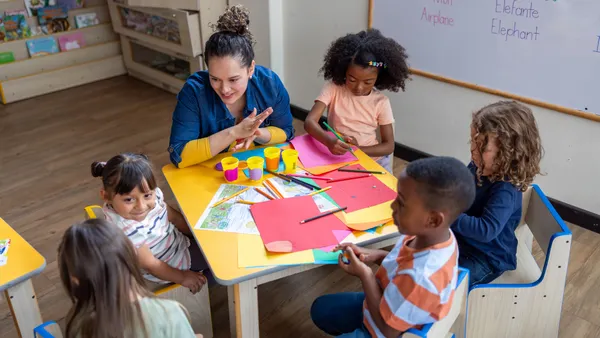Dive Brief:
- A new infographic from Lenovo sees augmented reality and integrated touchscreens on students' desks in education's future.
- The graphic starts by explaining what education looks like today and how it has changed. For example, 58% of Americans have smartphones today versus only 18% of American households had internet access in 1997.
- The "now" section also deals with the introduction of MOOCs and how, because of technology, "independent seat work improved" from 22% to 65%.
Dive Insight:
Some of the other future predictions by Lenovo and Huffington Post are: MOOCs continuing to provide access to free higher education, and employers putting a premium on "proven knowledge" over degrees. While some of the predictions, like augmented reality, may seem far off, the idea of desks with touch screens may be here sooner than we expect. It took less than 20 years for barely any house to have an ethernet connection to now over half of the U.S. population having wireless connections via phone. Just imagine what that means for the next two decades.
Interestingly, many of these technologies push for "independent" and "self-taught" learning. A recent piece in SLATE defines this type of learning as autodidact — driven to teach oneself what one needed to know — and argues that, while many tech entrepreneurs may learn this way, the majority of Americans, and students, do not thrive in this sort of environment. Perhaps it's not surprising that a tech company like Lenovo feels good about this type of learning being the future. Lenovo is owned by Microsoft, and perhaps one of the most famous autodidacts is that company's founder, Bill Gates.








